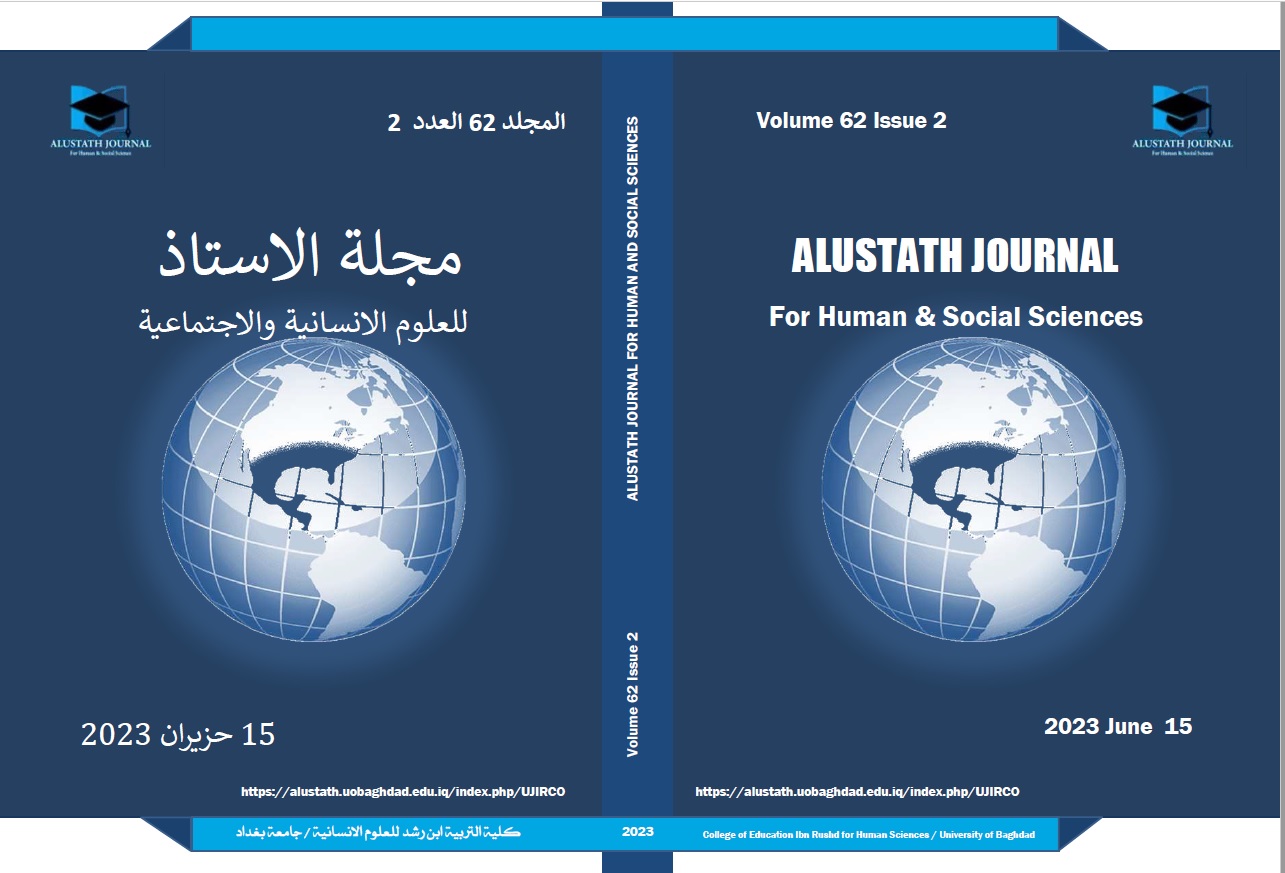Generative Phonology Models of Universal Grammar: Constraint-Based Optimality Theory as Opposed to the Rule-Based SPE Model
DOI:
https://doi.org/10.36473/ujhss.v62i2.2069Keywords:
generative phonology, universal grammar, constraint-based, optimality theory, rule-based, SPE modelAbstract
Current linguistic theory presumes languages to be essentially similar because individuals have a genetic inclination to acquire language. Linguists strive to create a model of this abstract universal grammar that captures the core commonalities among different languages while allowing room for all the subtle differences that naturally occur in human speech. This all-encompassing theory of universal grammar would accurately distinguish between possible grammars and impossible grammars. This paper examines the main tenets of the two major generative phonology models of universal grammar: SPE’s Generative Phonology theory representing rule-based, derivational universal grammar models, and Optimality Theory as a representative of constraint-based models of universal grammar.
Downloads
References
• Archangeli, D. B. (1999). Introducing optimality theory. Annual Review of Anthropology, 28(1), 531-552.
• Boersma, P., & Hamann, S. (2008). Loanword Phonology as First language Phonological Perception. In A. Calabrese & L. Wetzels. (ed)., Loan-Phonology: Issues and Controversies. John Benjamins.
• Carr, P. (2008). Glossary of phonology. Edinburgh University Press.
• Carr, P. (2013). English phonetics and phonology: An introduction (2nd ed.). Wiley-Blackwell.
• Carr, P., and Montreuil, J. P. (2013). Phonology. Palgrave Macmillan.
• Chomsky, N., & Halle, M. (1968). The sound pattern of English. Harper.
• Cooper, A. (2015). Reconciling Indo-European Syllabification. Brill.
• Cruttenden, A. (2014). Gimson’s pronunciation of English. Routledge.
• De Lacy, P. (2007). The Cambridge handbook of phonology. Cambridge University Press.
• Dohlus, K. (2005). Phonetics or phonology: asymmetries in loanword adaptations - French and German mid front rounded vowels in Japanese. ZAS Papers in Linguistics 42, 117-135.
• Fernández, E. M., & Cairns, H. S. (2018). Fundamentals of psycholinguistics. John Wiley & Sons.
• Féry, C., & van de Vijver, R. (Eds.). (2003). The syllable in optimality theory. Cambridge University Press.
• Kager, R. (1999). Optimality theory. Cambridge university press.
• Katamba, F., & Stonham, J. (2006). Morphology. Palgrave Macmillan.
• Kenstowicz, M. (2003). Salience and similarity in loanword adaptation: a case study. MIT.
• Kenstowicz, M. (2010). Loanword phonology and enhancement. Proceedings of the 2010 Seoul International Conference on Linguistics (SICOL-2010).
• Kula, N. C., Botma, E. D., & Nasukawa, K. . (2011). Continuum Companion to Phonology. Continuum International Pub. Group.
• Malmkjær, K. (2002 ). The Linguistics Encyclopedia (2nd ed.). Routledge.
• McCarthy, J. J. (2002). A thematic guide to Optimality Theory. . Cambridge University Press.
• McCarthy, J. J. (2007). What Is Optimality Theory? Language and Linguistics Compass, (4), 260-291.
• McCarthy, J. J. (2008). Doing optimality theory: Applying theory to data. Blackwell.
• McCarthy, J. J., & Prince, A. (1995). Faithfulness and reduplicative identity. . Linguistics Department Faculty Publication Series, 10.
• Paradis, C., & Tremblay. A. (2009). Nondistinctive features in loanword adaptation: The unimportance of English aspiration in Mandarin Chinese phoneme categorization. In A. Calabrese & L. Wetzels. (ed)., Loan-Phonology: Issues and Controversies. John Benjamins.
• Paradis, C., & LaCharité, D. (1997). Preservation and minimality in loanword adaptation. Journal of linguistics 33, 379-430.
• Paradis, C., & LaCharité, D. (2001). Guttural deletion in loanwords. Phonology, 18(2), 255-300.
• Paradis, C., & LaCharité, D. (2011). Loanword adaptation: From lessons learned to findings. The handbook of phonological theory, 751-778.
• Prince, A. & Smolensky, P. (1993/2004). Optimality Theory: Constraint interaction in generative grammar. Blackwell.
• Prince, A. (2002). Entailed ranking arguments. Unpublished manuscript. Rutgers University, New Brunswick, NJ. [Available on Rutgers Optimality Archive, ROA-500.].
• Prince, A., & Smolensky, P. (1997). Optimality: From neural networks to universal grammar. Science, 275(5306), 1604-1610.
• Radford, A. (1997). Syntax: A minimalist introduction. Cambridge University Press.
• Radomski, M. (2019). Polish Consonant Clusters in the British Mouth: A Study in Online Loanword Adaptation. Peter Lang.
• Rosenthall, S. (1997). The distribution of prevocalic vowels. Natural Language & Linguistic Theory, 15(1), 139-180.
• Tesar, B., & Smolensky, P. (1998). Learnability in optimality theory. Linguistic Inquiry, 29(2), 229-268.
• Uffman, C. (2011). Constraint-Based Phonology. In N. C. Kula, Continuum Companion to Phonology.
• Zsiga, E. C. (2013). The sounds of language: An introduction to phonetics and phonology. John Wiley & Sons.












